Castle & Key Poised To Go Operational, But Plenty Of Work Remains
By Richard Thomas
My first acquaintance with the crenellated grace of the Old Taylor Distillery came in my late teens. Although I had a license and a car, I continued to enjoy the pleasures of my bike, and went for long rides on rural roads. One of these found me coasting along McCracken Pike, humming music from the Barber of Seville ala Breaking Away. I was 17 years old, Woodford Reserve didn’t exist, and what I wanted was to explore Glenn’s Creek, not find abandoned distilleries. Yet three abandoned distilleries are exactly what I found: Labrot & Graham, Old Crow and Old Taylor.
Old Taylor, with its faux castle looks, became a particular favorite and was revisited many times, and I can safely tell you about that now because all such incidents of trespass are all very, very far past Kentucky’s statute of limitations. I was pursuing what would later be called “urban exploring,” although there was very little urban about it, because what I found at Old Taylor was similar to what I saw 15 years later in the spectacular ruins of Angkor Wat: buildings reclaimed by nature, heavily overgrown, and full of snakes, bats and other assorted critters. The tidied up structures seen in the 2014 pictures by Sherman Cahal of Abandoned don’t do justice to what I found there in the late 1980s and early 1990s.
Now that marvelous and crumbling booze factory, having narrowly avoided destruction, is poised to become an active distillery again under the name Castle & Key.
The Old Old Taylor
The Old Taylor Distillery is named for that Taylor, Colonel E.H. Taylor, who opened a facility that was part working distillery, part showcase in 1887. Each of these aspects were of equal importance at Old Taylor. The distillery produced a river of what was considered fine, straight Kentucky bourbon, being the first to cross the one million cases mark. Both well-connected and personally active in Kentucky politics, Taylor was a key figure in getting the Bottled-in-Bond Act of 1897 passed, channeling some of the era’s progressive spirit of food and drug regulation into the liquor business.
Yet Old Taylor was also designed with the visitor experience in mind, complete with a keyhole-shaped, peristyle spring house (hence the key to go with the castle), extensive gardens and a creekside gazebo. Tourists arrived by train, and were treated to a late 19th Century style fantasy experience of Bluerass genteelness. The only thing missing was a daily horse race.
The distillery changed hands over the years, ultimately becoming a Jim Beam property. It was Jim Beam who mothballed the facility in 1972, although they continued to use the warehouse space for a couple of decades. Indeed, the warehouses were in use when I made some of my visits, which why I sometimes had to pass on entering the property because of the presence of a security guard.
I went away to graduate school, and while I was away Brown-Forman renovated Labrot & Graham and opened Woodford Reserve there. My understanding is that an arts and crafts mall was briefly opened in the old bottling plant down the road at Old Taylor around the same time, but I cannot speak to that personally.
In 2005, as the American housing bubble reached its height, the 83-acre property was bought by a group of Atlanta investors with the intent of architectural salvage. One warehouse across the street from the main buildings was demolished and harvested, and had the bubble not collapsed the entirety of Old Taylor might have been cannibalized for its masonry, timber and more interesting fittings. Global economic calamity saved the ruins, and as the dust settled the bourbon boom took hold and Old Taylor ripened for revival.
Castle & Key
Old Taylor has been in the spotlight since a company named Peristyle bought the property in 2014, especially after they hired then-Master Taster Marianne Barnes away from Brown-Forman to become their Master Distiller, Kentucky’s first woman in that role.
I am sure it will prove a good hire. When I returned to the Old Taylor grounds for the first time in 23 years, I was met and shown around by Barnes and Castle & Key Brand Ambassador Brett Connors. I soon understood at least part of the reason why Barnes’s former colleagues at Woodford Reserve are still singing her praises: a little reserved, charmingly so, but someone who clearly knows her business.
The distillery was originally supposed to be operational and even open for visitors by now, but delays in construction in general are common, nevermind installing and starting up distillery machinery. Despite the snags, after several million dollars in investment Castle & Key isn’t far from its inaugural still run. The 42-foot Vendome column still and much of the other equipment has been installed, pipes winding through the building so as to minimize new holes in the 19th Century masonry, and the vast, cathedralesque fermentation chamber is being brought back to life. The extended rickhouse of Old Taylor, looking more train shed than warehouse, is already in use, with barrel space rented out to private clients.
Even with the progress, the main building, the castle itself, is best described as (merely) dilapidated at this stage. The working parts of the building are a work zone shambles, some gangways remain visibly rickety, and the boiler room is still in ruins, albeit cleared of vegetation and debris. The latter is slated to become the gift shop and tasting room, but has made barely the first step in that direction.
Castle & Key will probably be producing later this summer, and I can imagine them running tours by autumn, but work on “the keep” will likely continue into next year. Past that, later stages of development, including restaurants and a boutique guest house in the old administration building across the road, are years away.
Yet dispersed between the crumbling former glory of Old Taylor are glowing, finished signs of its revival into Castle & Key. The gardens have been restored to their old splendor by the esteemed designer Jon Carloftis, and even expanded upon to grow botanicals for the distillery’s gin. Tour groups are already calling on the distillery, and a wedding was recently held there.
The showcase side of Col. Taylor’s vision is already resurrected, and that the bourbon side of it will follow is a certainty. In time, Castle & Key’s combination of preserved industrial decay, revived historic grandeur and Taylor’s enduring sense of Bluegrass charm might just bring them to eclipse their neighbors down McCracken Pike, Woodford Reserve, as the prettiest distillery in Kentucky.
 The Whiskey Reviewer A World of Whiskey, Poured Every Weekday
The Whiskey Reviewer A World of Whiskey, Poured Every Weekday
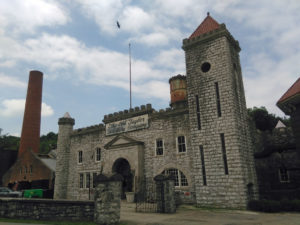
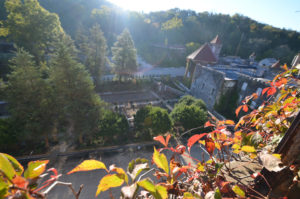
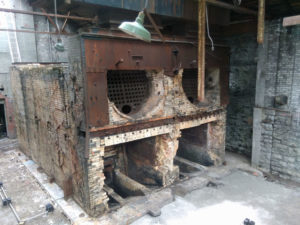
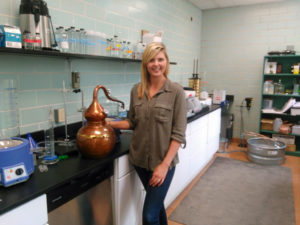
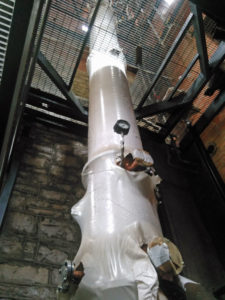
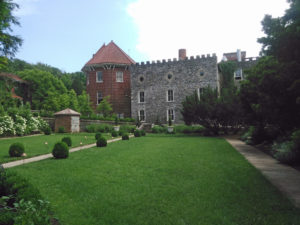

The arts and crafts mall was more like a vintage/junque mall. I went there with Jim and Tabby once when there were sellers set up with tables outdoors. Bought a Mammy cookie jar for Bonnie, who was into that kind of stuff.
I really like this article.